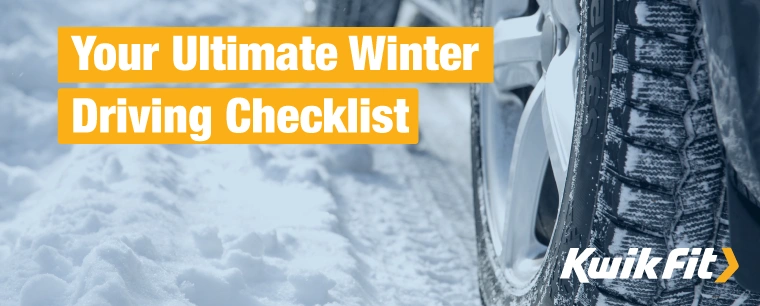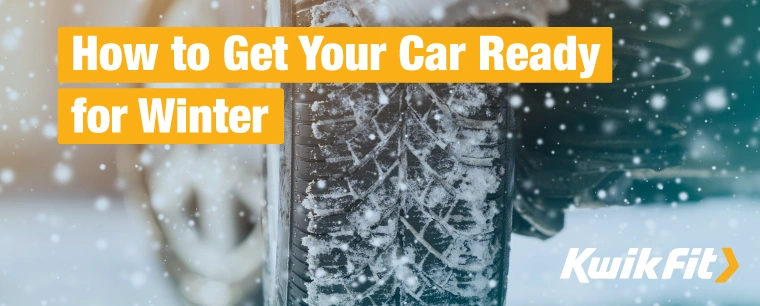Winter Driving Safety Tips That All Drivers Should Know
Bradley Jando | Tuesday 15th December 2020 4:57pm

From thick fog to black ice, winter in the UK can present motorists with a whole range of challenges. To help you avoid danger when youíre behind the wheel, here are some safety tips that all drivers should factor in when winter driving.
Winter driving in snow and ice
When temperatures tumble, you might have to de-ice your car before journeys. When you do this, donít stop at your windscreen and other windows. If thereís any snow on the roof of your vehicle, make sure you sweep this off too. If you donít, thereís a risk it will fall onto your windscreen while youíre driving and block your view.
To reduce the risk of skidding on the roads, itís essential that your tyres have enough grip. Although the legal minimum tread depth is 1.6mm, experts recommend having at least 3mm - and this is especially important in winter. You might even want to consider getting winter or all-season tyres that offer better grip in cold conditions.
One of the most crucial things you can do in ice and snow to reduce the risk of accidents is to take it slow and to leave extra space between your car and the vehicle ahead. Stopping distances can be up to 10 times greater in slippery conditions, so itís vital that you avoid sudden and harsh manoeuvres. Also, before you come to a downhill slope, reduce your speed and make sure youíre in a low gear. You should try to avoid braking when youíre travelling downhill too. If you do have to slow down, apply your brakes gently.
Even if youíre careful, thereís a chance your car will skid. If this happens, try to steer gently in the direction of the skid. For example, if the back of your vehicle is sliding to the left, steer to the left.
Where possible, plan your route to stick to major roads that are more likely to have been gritted and cleared of ice. Whichever route you take, watch out for black ice. As a general rule, if the temperature is very low and the road surface has a sheen and appears to be wet, drive with extreme caution. There is a chance this could be ice rather than water.
Should you drive in fog?
Falling temperatures increase the chances of fog, so it pays to be clued up on what to do if visibility drops when youíre travelling. Firstly, youíll need to decide which lights to use. Youíre required by law to use your headlights when visibility is significantly reduced (this is generally considered to mean when you canít see for more than 100 metres). If visibility is especially poor, you can use your fog lights. As soon as conditions improve though, you must switch them off. If you leave these lights on, you risk dazzling other drivers and obscuring your brake lights.
Adjust your speed so that you can stop in the distance you can see clearly in front of you, and make sure you leave a bigger gap than usual before the car in front (at least three seconds). Bear in mind that some drivers may not be using their lights, so youíll have to be especially vigilant. Check your mirrors carefully before you slow down too. Motorists behind you may find it harder to react, meaning that if you slow or stop suddenly, youíre more likely to be shunted.
Driving in high winds
Strong winds can wreak havoc on the roads. From toppling high-sided vehicles, to causing cars and bikes to swerve, to bringing trees down, they pose a number of risks. If itís windy while youíre driving, make sure you keep both hands on the wheel at all times, and prepare yourself for gusts if youíre approaching exposed stretches of highway. Be ready for sudden gusts when passing high-sided vehicles and tall buildings too, and try to keep your distance from other road users in case they get blown into your path.
Keep a constant lookout for objects on the road as well, including branches and trees. You should also lower your speed so that itís easier to stop if you do come across an obstacle in your path. This is especially important at night or if youíre travelling around blind bends.
Driving in heavy rain and floods
In heavy rain, you should always make sure your headlights are on - and if itís especially heavy and visibility is very low, you may want to use your fog lights. Be sure to switch these off as soon as the rain eases though.
Because it takes longer to stop on a wet surface, safety experts suggest leaving at least twice as much space between your car and the vehicle ahead. Also, drive more slowly than usual to reduce the risk of aquaplaning. If you do feel youíve lost steering control because your tyres arenít in proper contact with the road, hold the steering wheel tightly and slow down smoothly and gently until your tyres grip the surface again.
Where possible, avoid floods and areas of standing water, and donít be tempted to drive into water thatís moving or thatís over 10cm deep. If youíre travelling through water, move slowly so that you donít create a bow wave, and test your brakes as soon as itís safe to do so afterwards.
Even if you take all these tips on board and drive as carefully as possible in winter, thereís always a chance that youíll get stuck, break down or be involved in an accident. In case this happens, itís a good idea to pack emergency supplies including a blanket, shovel, torch, water and snacks. You should also make sure you have a charged phone on you at all times.
Drive safer with Kwik Fit
If you have concerns about your car and the prospect of driving in these conditions is daunting, book a free winter safety check at Kwik Fit and we will check your vehicle over for you. In the meantime, browse through our ultimate winter driving checklist here.
Any facts, figures and prices shown in our blog articles are correct at time of publication.
Featured Articles
Is Your Car Battery Ready for Winter?
Monday 11th November 2024
Is the UK on the verge of Ďthe coldest winter for 50 years?í Even if El NiŮo doesn't hit the UK this winter, reduce the risk of a winter breakdown by making sure your car battery is winter-ready.
Your Ultimate Winter Driving Checklist
Monday 31st October 2022
Driving in the colder months presents many challenges. Breakdowns are far more common in winter, so make sure youíre prepared with these essentials.
How to Get Your Car Ready for Winter
Wednesday 28th September 2022
Winter can be a harsh season for your car but planning ahead by carrying out some basic maintenance and packing some essential kit should help you avoid a winter breakdown.







